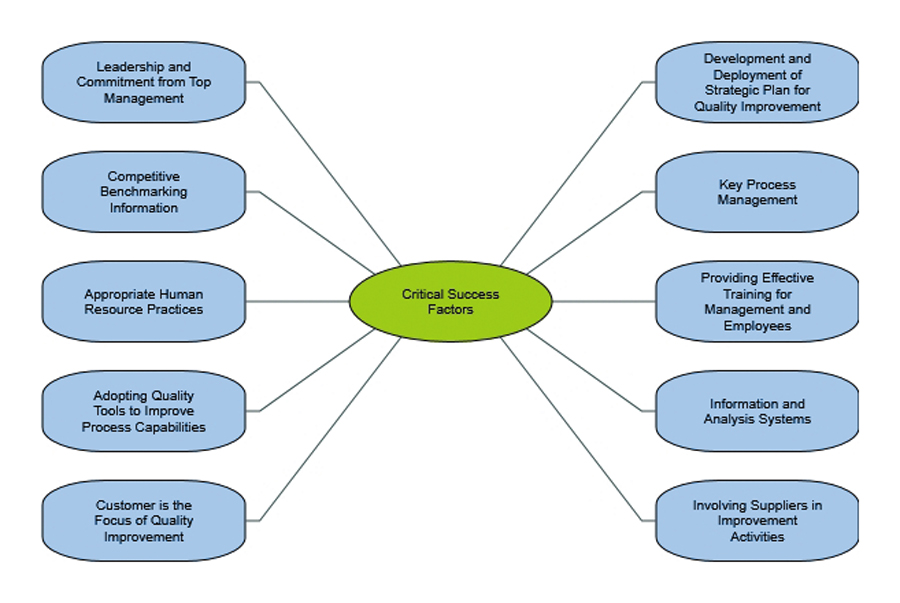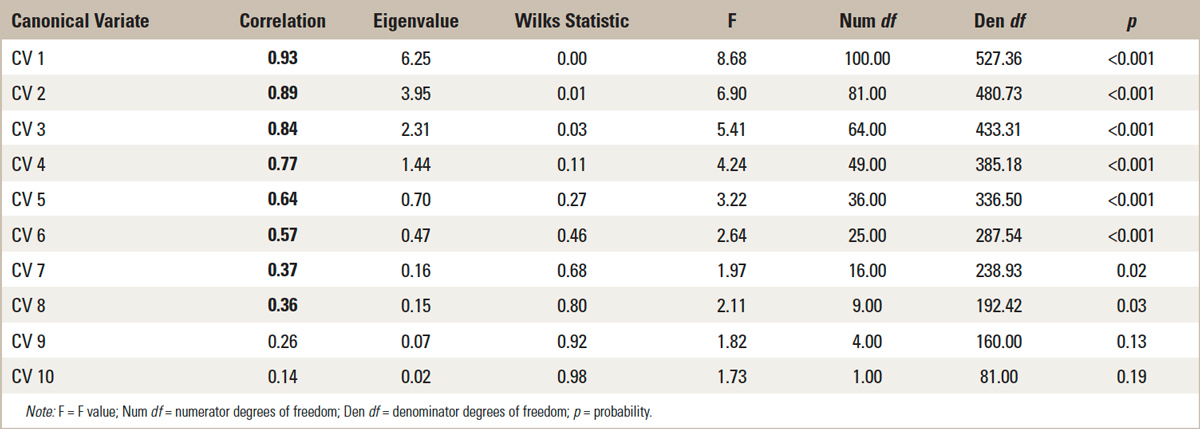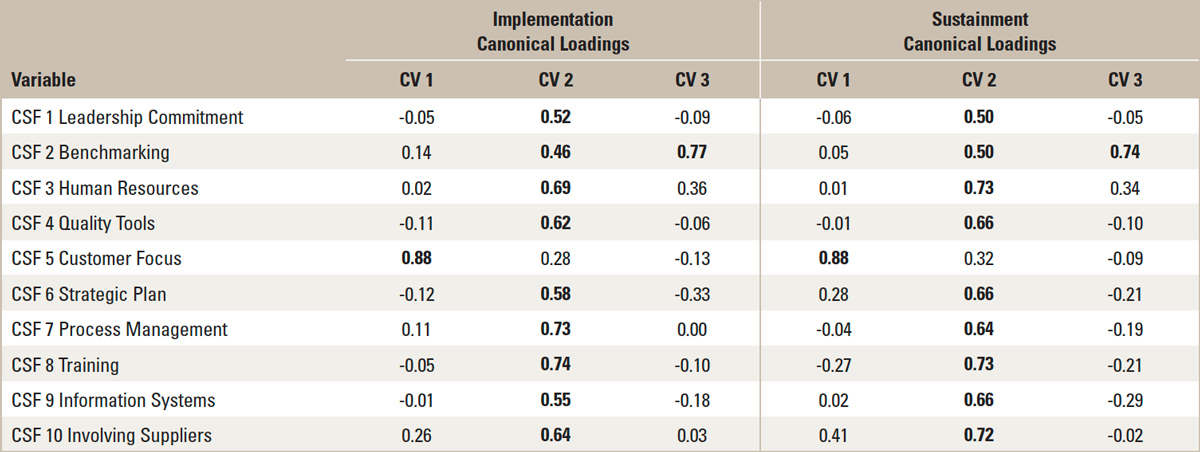By Pat Valentine, PhD
Uyemura International Corporation
Southington CT
Does sustained ISO 9001 and Lean Six Sigma deliver success?
Sustaining quality management systems and continuous improvement strategies is critical for retaining a competitive advantage in the printed circuit board industry. Implementing and sustaining both ISO 9001 and Lean Six Sigma provides quality improvements, enhances organizational performance, creates efficiencies, increases market share, improves financial performance, and reduces product reliability risk. This quantitative correlational study evaluates critical success factors for implementing and sustaining ISO 9001 and Lean Six Sigma. Survey data were collected from the North American printed circuit board (PCB) industry. Canonical correlations were used for data analysis. A statistical correlation was found between critical success factors for implementing and sustaining ISO 9001 and Lean Six Sigma. Three canonical variates were extracted and interpreted.
Quality has become a key process indicator for manufacturing and service companies. Quality is a strategic priority for all modern businesses.1 Improving and sustaining quality is a critical organizational strategy to retain customers in today’s globally competitive environment. Quality management is used to proactively find solutions to current and future cost and risk problems.
The costs of poor quality include all costs incurred for not making or providing a perfect product or service the first time, including scrap, rework, repurchasing raw materials, labor, and inventory.2 Companies operating at Three Sigma quality levels can spend about 25% of their annual sales remediating poor quality costs.2,3 Other estimates put the costs of poor quality in the range of 25 to 40%.4 Poor quality can destroy a company.
Unexpected product failures (poor reliability) significantly increase selling, general and administrative (SG&A) costs, leading to increases in inventories and fixed assets required to support operations. These indirect costs erode profitability more than the amount directly attributable to warranty claims processes. Product recalls negatively impact businesses financially and result in adverse publicity.
The printed circuit board is at the heart of most electronics worldwide. IPC defines three classifications of printed circuit boards, basing each class on tiered quality and reliability requirements: 1) general electronic products, 2) dedicated service electronic products, and 3) high-performance/harsh environment electronic products.5 Class 3 requires on-demand performance, critical for electronic applications, especially within the aerospace and medical industries.
Globally, industry leaders realize the need for high-quality PCBs to maintain competitiveness and profitability.6 Competitiveness in PCB manufacturing requires low production cost, high quality, and on-time delivery. ISO 9001 and Lean Six Sigma specifically address and target these manufacturing quality issues.
Quality Management Systems
The International Organization for Standardization (ISO) 9001 and Lean Six Sigma are proven quality management systems (QMS) that can reduce the cost of poor quality and increase productivity and profitability. Research shows implementing and sustaining ISO 9001 and Lean Six Sigma provides a synergistic improvement for organizations.7 Both ISO 9001 and Lean Six Sigma can improve an organization’s financial performance by enabling quality improvements. Implementing and sustaining quality management systems and continuous improvement strategies is critical for retaining a competitive advantage in the North American printed circuit board industry.
In this research, the researcher studied critical success factors for implementing and sustaining ISO 9001 and Lean Six Sigma by quality professionals in the North American PCB industry. The research question was, “Is there a correlation between critical success factors for implementing and sustaining ISO 9001 and Lean Six Sigma in the North American printed circuit board industry?”
Critical Success Factors
Numerous opinions of critical success factors (CSF) were uncovered during an in-depth literature review. Many scholars and researchers agree on 10 prominent critical success factors.8,9 These critical success factors are woven throughout peer-reviewed literature that spans decades. Figure 1 lists the 10 prominent critical success factors developed from the literature review.

Figure 1. Critical success factors.
Leadership and commitment from top management. Senior management must demonstrate commitment by actively engaging in the implementation stage and be highly visible. Top management must articulate their commitment using communication to circumvent confusing intentions that can derail the quality management system initiative. Senior management commitment is critical for all QMS, independent of which change management method is employed. Senior management commitment needs to be constant over time and relates more to how an organization approaches change than the actual change method specifics. Senior leaders send encouraging signals, and influence, inspire, and motivate the organization to adopt the quality management system culture.
Competitive benchmarking information. Xerox coined the term benchmarking in 1979. Benchmarking is a systematic process of searching for best practices, innovative ideas, and decidedly effective operating procedures that can lead an organization to exceptional performance. Benchmarking includes process benchmarking, performance benchmarking, problem-solving benchmarking, and strategic benchmarking. Process benchmarking focuses on discrete work processes and operating systems (e.g., customer complaints, order fulfillment) to identify the most efficient operating practices from industry peers. Performance benchmarking allows organizations to assess their competitive positions through either product or service comparisons. Problem-solving benchmarking looks outside the problematic area or even outside of the organization to find solutions. Strategic benchmarking studies how companies compete.
Appropriate human resource practices. Organizational success is directly connected to proper human resource management. Good human resource management includes ethical treatment of workers and ensuring employee well-being. Human resource practices include employee recruitment, job duty training, employment security, career advancement paths, teamwork opportunities, performance-related pay, and excellent communication. Appropriate human resource management is a competitive advantage for organizations.
Adopting quality tools to improve process capabilities. If quality improvements are to occur, quality tools must be employed. Dozens of quality tools are utilized in quality management systems. Quality tools fall into one of five categories: 1) identifying causes of poor quality, 2) detailing and comprehending processes, 3) collecting and analyzing data, 4) generating improvement ideas, 5) and tracking continuous improvement projects. The goal of employing quality tools is to make informed decisions that improve quality and reliability.
Customer is the focus of quality improvement. Improving and sustaining quality is a critical organizational strategy to retain customers in today’s globally competitive PCB industry. Business entities must strive for continuous quality improvements to satisfy customer needs. Customer relationships are developed and maintained by regular communication, interaction, and engagement. Communication is a contact sport that needs active participation early and often. Many managers do not have enough direct contact with their employees, suppliers or customers to adequately capture the voice of the customer.
Development and deployment of a strategic plan for quality improvement. A strategic plan is a document used to communicate the goals and needed actions within the organization. Strategic planning is envisioning a desired future state, translating this desire into goals and objectives, and setting a sequence of activities to achieve it. Strategic planning requires a disciplined approach from leaders and managers to define what an organization is, whom it serves, what it does, and how it will measure success. Strategic planning helps develop and refine critical customer attributes of fundamental business processes to ensure quality products and services.
Key process management. Process management is a structured approach to analyzing, continually monitoring, and improving processes that sustain an organization. Process management includes all methods, techniques and practices used by an organization to improve its process stewardship. Process management is intrinsically embedded in quality management systems such as Lean Six Sigma, ISO 9001 and TQM. Weak or neglected business process management may lead to reduced process performance.
“Is there a correlation between critical success factors for implementing and sustaining ISO 9001 and Lean Six Sigma in the North American printed circuit board industry?”
Providing effective training for management and employees. Pertinent management and employee training improve long-term organizational performance. Actively engaging in practical training increases the financial returns of an organization. Cooperative and collaborative training instills in the workforce the organization values them. Training managers and employees establish a shared vision of both short- and long-term quality goals. Training executives create a united vision, resulting in less resistance and increased sustainment of the deployed quality management system. Training improves morale, quality, customer satisfaction, financial performance, and long-term organizational success.
Information and analysis systems. All businesses need accurate and pertinent information and analysis systems. Business information and analysis provide vital metrics feedback on process efficiencies, cycle times, asset utilization, process yields, and quality. Accurate, actionable information can reduce waste, improve operational performance, ensure quality, and increase customer satisfaction.
Involving suppliers in improvement activities. The majority of the costs of manufactured goods are in the raw materials themselves. Costs of raw materials are typically 50% to 80% of the total cost of manufactured goods. Raw material suppliers must consistently deliver high-quality raw materials to manufacturers. Suppliers are an excellent resource for technical assistance in continuous improvement activities at the manufacturer’s site. Suppliers assist with onsite visits, audits, joint training, and product and process support.
Methods and Materials
Survey. The instrument for this study was a mixed nominal-scale and interval-scale response survey on quality. The survey instrument consists of three sections: 1) quality management systems in use; 2) critical success factors for implementation; and 3) critical success factors for sustainment. The quality management systems consist of one question asking which systems are in use within the organization. The implementing section consists of one question asking the agreement of critical success factors for implementing QMS. The sustaining section consists of one question asking the agreement of critical success factors for sustaining QMS.
Participants were chosen based on their knowledge and experience of QMS within the North American PCB industry. Participants were either directors and managers of quality management systems or directors and managers of quality or process engineering. In some circumstances, an individual manages both the QMS and the process engineering department. These participants were highly qualified professionals familiar with their organization’s QMS within the North American PCB industry.
Survey reliability, validity, and multicollinearity. Survey responses for both the implementation and sustainment questions were analyzed for reliability, validity and multicollinearity. Reliability was confirmed using Cronbach’s alpha, and validity was confirmed using unrotated principal components factor analysis. Kaiser’s MSA was used to determine if the distribution of values was adequate for conducting factor analysis. Multivariate normality of the data set distributions was tested using Bartlett’s test of sphericity. Both Kaiser’s MSA and Bartlett’s test of sphericity confirm that factor analysis is appropriate for the pilot study. Multicollinearity was checked for and determined not to be present. The research instrument was determined to measure what it was intended to measure: critical success factors for implementing ISO 9001 and Lean Six Sigma.
Canonical correlation. Canonical correlation is a dimension reduction technique similar to principal components and factor analysis. Canonical correlation analysis relates two sets of variables together. In this research, the two sets of variables are critical success factors for implementation and critical success factors for sustainment. Canonical correlation analysis produces latent variables, which represent multiple variables from the actual data sets. These latent variables allow exploring linear relationships between the two variable sets, all measured on the same individual. Canonical correlation allows these explored relationships to be summarized into a few components. The researcher then interprets and names each component.
Results
The canonical variants summarized portions of the variation in the original two sets of variables. Relationships between the paired canonical variants were then determined through correlation analysis. Table 1 summarizes these results with statistically significant canonical correlations in boldface.
Table 1. Canonical Correlations of CSF for Implementation and Sustainment

There are 10 pairwise correlations. Eight of these correlations are statistically significant. Canonical correlations are always positive and range from 0 to 1. The correlation coefficients range from 0.14 to 0.93. The strengths of the correlations range from weak to strong. Only the first three canonical variates were retained for further analysis, accounting for 80.6% of the variance. Canonical variates 4 through 10 were pruned due to superfluous information.
Canonical loadings were calculated for all 10 canonical variates. Loadings ranged in values from -0.50 to 0.883. A minimum absolute value of 0.30 is needed for meaningful loading and interpretation, with larger values preferred. Table 2 displays the canonical variate loadings of the critical success factors for implementation and sustainment with meaningful absolute loadings above 0.45 in boldface.
Table 2.Canonical Loadings

Interpretation of canonical variate loadings. Canonical variate one (CV 1): critical success factor five (CSF 5) loads heavily on this variate. The loading value is 0.88. Critical success factor five (CSF 5) is the “customer is the focus of quality improvement.” This canonical variate can be interpreted as customer quality focus.
Canonical variate two (CV 2): Critical success factors one through four and six through 10 (CSF 1-4, 6-10) load heavily on this variate. The loading values range from 0.46 to 0.74. These critical success factors are related to internal organizational quality infrastructure. This canonical variate can be interpreted as internal organizational quality leadership.
Canonical variate three (CV 3): Critical success factor two (CSF 2) loads heavily on this variate. The loading values range from 0.74 to 0.77. Critical success factor two (CSF 2) is “competitive benchmarking information.” Benchmarking is a continuous improvement activity that searches for best practices and identifies the most efficient operating procedures. This canonical variate can be interpreted as continuous improvement.
Conclusion:
The cost of poor quality and the need for high reliability are the catalysts driving quality management systems today. The costs of poor quality include all costs incurred for not making or providing a perfect product or service the first time. Poor quality can cost upwards of 40% of annual sales. Poor quality can destroy a company. Competitiveness in the printed circuit board manufacturing industry requires low production cost, high quality, and on-time delivery. ISO 9001 and Lean Six Sigma address and target these manufacturing quality issues. Implementing and sustaining both ISO 9001 and Lean Six Sigma can synergistically benefit an organization. In this research, the researcher addressed, “Is there a correlation between critical success factors for implementing and sustaining ISO 9001 and Lean Six Sigma in the North American printed circuit board industry?”
Three canonical variants were derived from each data set for implementation and sustainment of ISO 9001 and Lean Six Sigma. Addressing these three canonical variates may significantly improve implementing and sustaining ISO 9001 and Lean Six Sigma. The three canonical variates then become the framework and can be customized around site-specific needs and limitations. Relevant discussions centering on these three canonical variates include questions such as:
CV 1 customer quality focus. How does the customer define quality? Does the organization have the capability to measure key quality attributes? How will evolving customer quality requirements be determined? How will customer poor quality issues be addressed?
CV 2 internal organizational quality leadership. Does senior leadership realize the need for and support a quality culture? How will organizational quality buy-in be achieved? How will the quality infrastructure be deployed? How will remedial training and new concepts be adopted and disseminated throughout the organization?
CV 3 continuous improvement. Which continuous improvement protocols (e.g., DMAIC, PDCA, etc.) will the organization use? Which continuous improvement tools will the organization use? How will inter-department, cross-department, and industry best practices be determined and implemented? Is the entire value stream viewed in a holistic systems approach? How will innovation be incorporated into continuous improvement activities?
Correlation does not prove causation. Four conditions are required for making a causal claim: 1) correlation that is statistically significant, 2) time order of events makes logical sense, 3) theoretical mechanism makes sense, and 4) non-spuriousness; data and results are authentic and real.10,11 Proving causation requires multivariate analysis where the dependent variable variance is examined in the presence of changes in the explanatory variables. An actual experimental quantitative design is necessary.10,11
This research suggests these three canonical variates are needed to successfully implement and sustain ISO 9001 and Lean Six Sigma in the North American printed circuit board industry. The recommendations of this research may have applicability to other QMS and industries. Evaluating and incorporating the three canonical variates may improve QMS implementation and sustainment.
References
[1] J. Antony, “The Ten Commandments of Quality: A Performance Perspective,” International Journal of Productivity and Performance Management, vol. 64, no. 5, 2015.
[2] T. Pyzdek, and P. Keller, The Handbook for Quality Management, 2nd Ed., McGraw-Hill, 2013.
[3] K. Imler, Get it Right: A Strategic Guide to Quality Systems, ASQ Press, 2006.
[4] A. Buthmann, “Cost of Quality: Not Only Failure Costs,” web post, retrieved from www.isixsigma.com/implementation/financial-analysis/cost-quality-not-only-failure-costs/, 2017.
[5] Bowen, W.P., Jerman, J.C. (1995). Nonlinear regression using spreadsheets. Trends in Pharmacological Sciences, 16 (12), 413-417
[6] Y., Lin, B. Yu, and S. Tsai, “High-Tech Manufacturing Enterprises" Competitive Strategies – The Case of Printed Circuit Board Manufacturing in Taiwan,” Advanced Materials Research, vol. 945-949, 2014.
[7] M. Carvalho, L. Ho, and S. Pinto, “The Six Sigma Program: An Empirical Study of Brazilian Companies,” Journal of Manufacturing Technology Management, vol. 25, no. 5, 2014.
[8] D. Montgomery, “Why Do Lean Six Sigma Projects Sometimes Fail?” Quality and Reliability Engineering International, no. 32, 2016.
[9] E. Psomas, “The Underlying Factorial Structure and Significance of the Six Sigma Difficulties and Critical Success Factors,” The TQM Journal, vol. 28, no. 4, 2016.
[10] M. Brown and K. Hale, Applied Research Methods in Public & Nonprofit Organizations, Jossey-Bass, 2014.
[11] “Canonical Correlation: A Supplement to Multivariate Data Analysis,” Multivariate Data Analysis, Pearson Prentice Hall Publishing, 2013.
Biography
Patrick Valentine is the Technical and Lean Six Sigma Manager for Uyemura USA. As part of his responsibilities, he teaches lean six sigma green belt and black belt courses. He holds a Doctorate Degree in Quality Systems Management from New England College of Business, Six Sigma Master Black Belt certification from Arizona State University, and ASQ certifications as a Six Sigma Black Belt and Reliability Engineer. Patrick can be contacted at pvalentine@uyemura.com